Where the creative rubber hits the road—art made from tires
One way to cultivate creativity is to make art from the mundane. There is tremendous freedom in experimenting with a range of common everyday objects without any preconceived notions. Simply handle the media and reflect on, and then play up, its inherent characteristics. This month’s medium is tires.
Through the strategic efforts of advertisers, tires have come to symbolize durability, strength, and protection. More than just the functional shoes for our horseless carriages, tires with their white walls or chrome rims have become fashion statements, epitomizing success and elegance. In the hands of artists, tires have been used to highlight more critical social, environmental, and historical concerns. Inseparable from automobiles, tires evoke the varied and complicated issues around a male-dominated car culture. Through their rampant use of rubber and petroleum resources, tires also touch on issues of colonization, economic disparity, and ecological destruction. With Americans scraping 300 million tires a year, tires have also come to symbolize our throw away society and related environmental issues. You will never look at tires the same way again.
- Robert Rauschenberg’s Monogram exhibits arguably the most famous tire in art history, which may be “the eye of an esthetic/erotic needle” or just a found object he happened upon while scrounging the streets for his “Combines.”
- Hand-carving intricate patterns and floral motifs on used car tires, Wim Delvoye continues his transformation of everyday utilitarian objects into purely decorative items, elevated by their status as art objects.
- The Pneumatic installations created by artists OOSS, Iago Buceta, and Mateu Targa arrange recycled tires into playful formations to call attention to and revitalize urban spaces which had lost their social function.
- Carving worn out tires into rolling rubber stamps, Betsabee Romero’s provocative installations use pre-Columbian iconography, colonial imagery, and popular culture signposts to explore cultural identity, gender issues, and social concerns.
- Subversively appropriating symbols of colonial oppression and violence, Brett Graham decorates his tire-based Weapons of Mass Destruction with traditional Maori patterns.
- In her installations Gridlock, Take Out, and Pass the Buck, Chakaia Booker exhibits her signature style of shredding and stripping discarded tires into pieces and then weaving and riveting them back together into complex assemblages that meld ecological concerns with race, gender, and economic issues.
- Wrapping the Israeli Pavilion with a mesh of tires impregnated with aromatic items, Tsibi Geva’s Archeology of the Present explores issues of home, existential anxiety, and living in a state of danger.
- Yodogawa Technique, an art unit founded by Hideaki Shibata and Kazuya Matsunaga, creates objects such as Chinu—the black sea bream of Osaka Bay using garbage and items washed up on local waterways.
- Using 6000 car tires arranged in the shape of a Polaris submarine, David Mach created Polaris (1983) as a protest against the nuclear arms race.
- Inspired by his upbringing in rural Korea and the spare tire on a family Jeep, Yong Ho Ji’s Mutant Mythos series uses strips of used tires to make art about humanity’s responsibility to nature, through subject matter as well as its recycled materials.
- MLB Pitcher turned recycled materials artist, Blake McFarland uses rubber tires to create animal sculptures.
- Under the direction of Carl Elkins, the Munich-based photography studio Mierswa-Kluska created fashionable Treadwear armor, twisting and wrapping tires around pale, warrior-like models.
- In an effort to divert post industrial waste from landfills, Bon Echo Design transforms found objects into art and functional design.
- Leo Kemphf’s Tired Lounge uses a lattice of Hoosier sprint car tire strips to create a fashionable rocking chair.
I prefer to wait for an idea, then the technique will follow. It can be marble, aluminum, anything. First, you need the idea – you want to know what you want to do and why, and if you solve this, the other things are easy and fun. With my way of working, you don’t define yourself by a material but by a way of thinking and working. This allows me to be very free and to do very different things….I like when something is difficult; I get more excited. By tattooing pigs, if I get into trouble with animal rights activists, I think it’s more interesting. It adds another layer to the thing. For example, why would they not be happy? Why can you kill to eat and you cannot kill for art? It’s like a war on utilitarianism. Everything has to be necessary. Basically they have a problem with art.
—Wim Delvoye, (whose decorative touch extended to the tattooing of live pigs) in an interview with Y-Jean Mun-Delsalle of Art Republik. Wim Delvoye video interview
The project is based on continuity and repetition. Once we started working, the visual effect that emerged from the tires caught our attention, since one could believe they were going beyond the formal limits of walls and urban architecture. People’s reactions varied widely, from those who didn’t understand what they were seeing and why we were doing it and left the works with a mix of incredulity and indifference, to those kids who used our works as an amusement park, playing and climbing on them.
— Octavi Serra, Iago Buceta, and Mateu Targa, in an interview with Beckett Mufson about their Pneumatic installation for the Us Barcelona
Tires are made of rubber, and rubber is a pre-Hispanic material, OLLIN. It was used on ceremonies and in the ball game. In my case formally, the way in which I carve the tires is like linoleum carvings. The results are very similar and it reminds me of one of the very interesting education experiments that muralists made of their time, “la escuela de la gráfica popular.”…I am interested in Aztec and Mayan aesthetics because even in my own country, these cultures are recognized only in an anthropological way. As in every culture that had moments in which the development of geometrics or synthesis of shapes were wonderful, it is important to make visible my admiration for them. I want to honor their artistic qualities. I am trying to incorporate these cultures not only as references, but also as a part of my understanding of nature and culture, honoring in my most respectful way to do it.
— Betsabee Romero, in an interview with Jade Angeles Fitton. Betsabee Romero video interview
As a conceptual analogy, I usually start with the rubber tire itself. It’s about mobility, growth. They’ve used it on the moon. In a large way, it’s our method of communication. For example, a wall or relief using old tires suggests archaeological finds and the deciphering of patterns and textures into new languages or new symbols. The tire-making industry says that the patterns in the tires function to “wick away water” in wet weather. But where did the idea come from? Where does information begin? These same patterns may have been a means of communication some time in the past; they may translate into a way of writing, a language or physical tool that actually performs. Something of an analogy for this can be seen in the translation of pictographs into jewelry. My intention is to translate materials into imagery that will stimulate people to consider themselves as a part of their environment—one piece of it. Whether I use an architectural format or something to look at, I believe art should dialogue with viewers.
— Chakaia Booker, in an interview with Jan Garden Castro for Sculpture Magazine
Mihaia (2010) is a near full-scale Russian BRDM-2 scout car. The BRDM-2 is obsolete now. However, it was used by over 40 countries, every time you turn on the television, in some third world country they seem to have one of these tanks. I was fascinated by the way that people replaced the salvation and religion and god by this sort of faith and salvation in weapons.
— Brett Graham, Brett Graham video interview
The used tires, which are impregnated with a distinct odor, form an organized network of holes imbued with a protective potential, while simultaneously attesting to a state of danger, constituting a powerful material presence, and communicating a charged, urgent visual and political statement.
— Tsibi Geva, in a statement by pavilion organizers Tsibi Geva video interview about the project
I wanted to express strong living things under, what I thought of as, the term ‘Mutant’. So I looked for some stuff which could express the concept of both soft and powerful. Also I thought that life belonged to Mother Nature, so I brought that into consideration as well. At the time, I had found tire scraps stuck behind my jeep, all roughly cut and stuck between the surfaces of the wheels. I felt that these grooves and slivers could be controlled, and soon enough, they became the body of my actual work. After a few years, I’ve been able to establish my style that you see today. I don’t think there is only one way to expression. The tire was just the best material to express my vision of ‘Mutant’, there isn’t any more meaning to the material other than that. If I change or vary the theme or concept, it is because I have changed the medium I’m working with.
— Yong Ho Ji, in an interview with Empty Kingdom
Please share if you know others who create art made from tires.



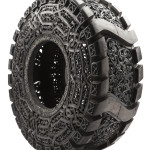
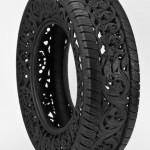
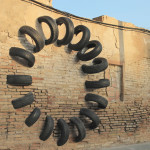
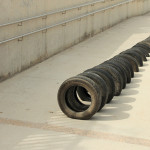
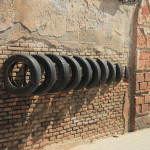

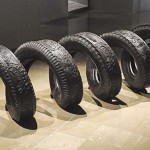

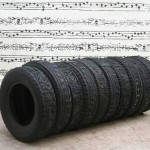
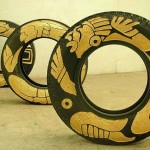
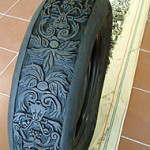
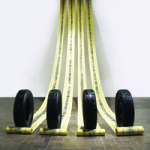
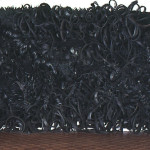
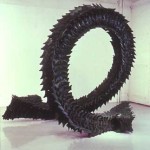
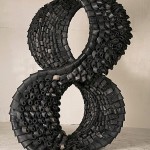
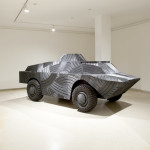


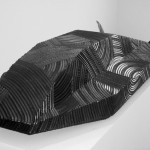
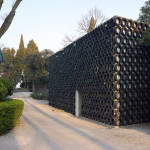
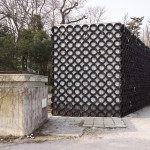


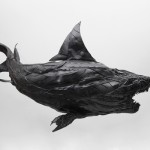
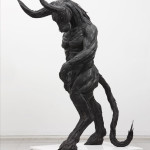

Comments are closed, but trackbacks and pingbacks are open.